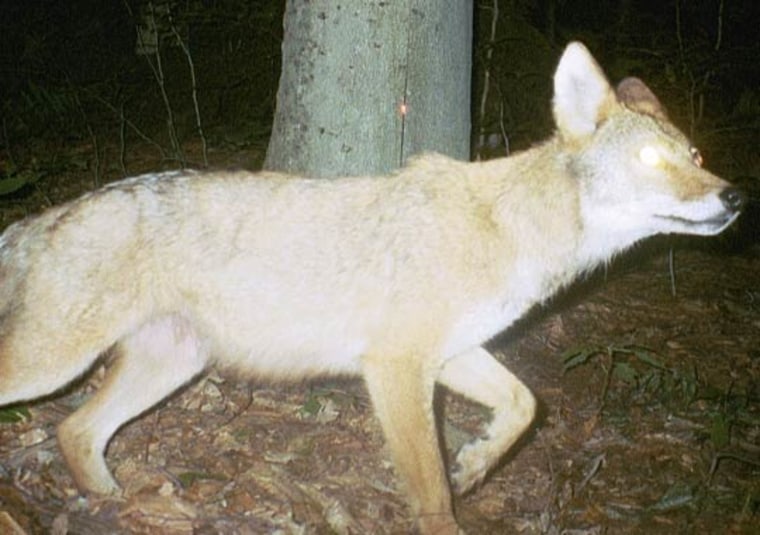New DNA evidence reveals that coyotes have bred with wolves in the the northeastern United States, turning mice-eating coyotes into much larger animals with a hunger for big prey, such as deer.
The resulting "coywolves" may, however, benefit ecosystems, since they appear to be filling niches once occupied by wolves that were eradicated by humans.
"We are finding repeatedly that hybridization is more common than we used to think," lead author Roland Kays told Discovery News.
"This is an evolutionary mechanism to generate new variation that can work faster than genetic mutation," added Kays, curator of mammals at the New York State Museum.
Kays and colleagues Abigail Curtis and Jeremy Kirchman took mitochondrial DNA samples from 686 eastern coyotes housed in museums, or obtained by donations from hunters, fur trappers and various government agencies. The scientists also measured 196 coyote skulls.
The study, outlined in the latest issue of Royal Society Biology Letters, reveals that some of the largest specimens were indeed coyote and wolf hybrids.
Given where these animals came from and the degree of documented genetic diversity, the researchers can tell that a few coyote females mated with male wolves north of the Great Lakes.
Subsequent coywolf population expanded into western New York and western Pennsylvania, which also have populations of pure coyotes.
Bigger than coyotes, smaller than wolves
Coywolves aren't too hard to pick out from pure coyotes.
"They are larger, both in terms of body size and skull dimension," Kays explained. "Their skulls are especially wide compared with their length."
"Male coywolves are larger than females, while coyotes are not," he added. "Coywolves also tend to be more variable in terms of color, with red, dark and light morphs."
He said coywolves tend to hunt larger prey than coyotes do, scavenging or actively seeking deer, for example, which is possible given the coywolves' larger size.
Coywolves even sound different.
"Their vocalizations are deeper than western coyotes," he said. "They readily make use of forest habitat, while western coyotes tend to avoid it and prefer open areas."
Not mating per usual
While hybridization happens and "is a natural process," according to Kays, it's also not mating per usual. Wolves often "persecute coyotes rather than breed with them," he said, so it's still rare for these distinct, yet related, species to make love and not war.
The same holds true for dogs and coyotes.
"Generally coyotes kill dogs; dogs avoid coyotes," he said, but interbreeding does sometimes occur, although he and his team found very little DNA evidence for it in their sizable sample from the Northeast. He believes "coy-dogs" are more common in the Southeast.
Earlier this year, University of Calgary professor and wolf expert Marco Musiani determined that human breeding of dogs led to a dominant gene for dark fur to be spread, through interbreeding, to wolves. Black fur is now commonplace in wolf packs.
Climate change has diminished snow in northern environments. White wolves used to benefit when snow was more plentiful, but now black fur provides them with greater stealth when the wolves hunt in snowless places.
Musiani said: "It is somewhat ironic that a trait that was created by humans may now prove to be beneficial for wolves as they deal with human-caused changes to their habitat."
Kays said a proposal to re-introduce wolves into the Adirondacks "has basically been put on hold while we figure out the eastern wolf taxonomy."
Although the coywolf is moving into the wolf's former ecological niche, he said that "wolves are much larger," so they are still the optimal keystone predator for former wolf-dominated regions.
More on endangered wolves | evolutionary hybrids
